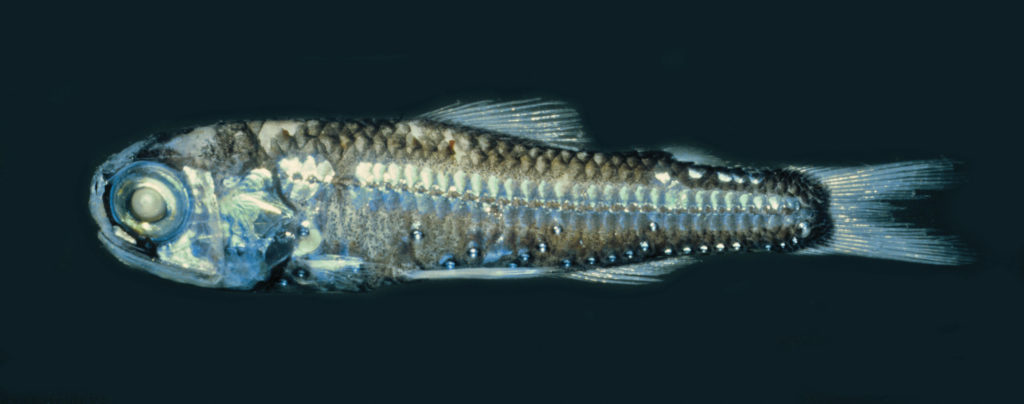The total stock of fish on the planet had been reckoned until today to be around 2,000 million tonnes. About half of them were thought to be mesopelagic fish, in other words, ones found at depths of between 200 and 1,000 metres in ocean areas.
However, an international team*, in which AZTI-Tecnalia researchers are participating and which is being led by the doctor in oceanography Xabier Irigoien, has discovered that its abundance could be at least 10 times higher than the original estimate. The results have been published in the journal Nature Communications.
Mesopelagic fish spend the daytime in the twilight zone of the ocean at a depth of between 200 and 1,000 metres and come up to the surface to feed during the night, in what could be regarded as the planet’s biggest animal migration. They constitute a significant part of tuna feed, but as they are not fished commercially they continue to be one of the great unknowns.
In this new study, researchers have combined the acoustic data from the Malaspina expedition with a trophic model to conclude that the biomass of these fish must be at least 10 times higher than what had been previously estimated.
As mesopelagic fish feed on the surface and migrate every day to depths of more than 500 metres, they speed up the transport of CO2 to the bottom of the ocean. They also contribute towards increasing oxygen consumption in deep waters. The new biomass estimates indicate that their role in the ocean’s biogeochemical cycles needs to be reassessed.
###The results gathered in the scientific paper have involved researchers from AZTI-Tecnalia, CSIC-Spanish National Research Council, IEO-Spanish Institute of Oceanography, the Universities of Oviedo, Cadiz and Las Palmas de Gran Canaria, together with KAUST (Saudi Arabia), the University of Western Australia and the University of Bergen (Norway).
The Malaspina expedition is a Consolider-Ingenio 2010 project led by Carlos Duarte (CSIC) and funded by the Spanish Ministry for the Economy and Competitiveness. Malaspina comprises 27 research groups from the CSIC, the IEO-Spanish Institute of Oceanography, 16 Spanish universities, one museum, the AZTI-Tecnalia R&D centre and the Spanish Navy. The total funding, which also has the collaboration of the CSIC and the BBVA Foundation as well as of various Spanish universities and AZTI-Tecnalia, amounts to approximately 6 million euros.
Are you the author of this article? We had a site crash back in 2016 and lost some author attributions. We promise this is not a snub! Please email us and let us know that this is your post. Thanks and apologies!


